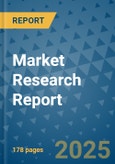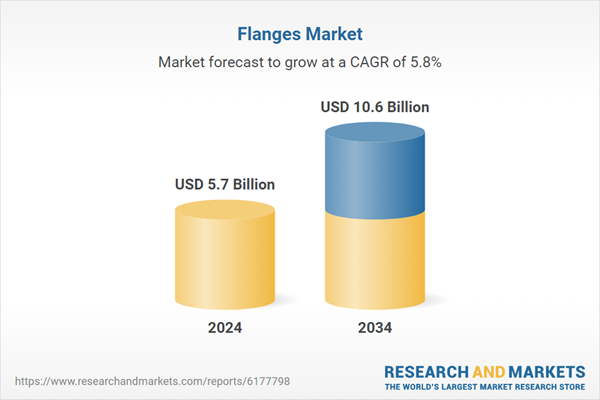Increasing global investments in energy infrastructure, ranging from oil and gas to fast-growing renewable sources, remain the primary growth catalyst for the market. This evolving mix of traditional and alternative energy sources continues to drive the demand for high-performance connection solutions capable of supporting a wide range of energy transmission systems, including electrical and fluid-based networks. Flanges play a crucial role in ensuring sealed, durable, and secure connections across these applications. As industries seek longer service life and reduced downtime, material choice has become a key decision factor. Stainless steel continues to dominate the landscape due to its exceptional resistance to corrosion, minimal maintenance needs, and high-temperature strength, making it suitable for some of the most demanding operational environments. Its durability reduces long-term costs and boosts system efficiency, which aligns with critical application needs in sectors like petrochemicals, chemicals, and food processing. Market dynamics are also shifting as industries move toward smarter, more sustainable infrastructure, prompting further development in advanced flange materials and technologies.
In 2024, the stainless steel segment held a 46% share. Its superior performance under high pressure and temperature, combined with long-lasting resistance to rust and corrosion, makes it the material of choice for fluid-intensive environments handling both liquids and gases. Stainless steel, particularly with added chromium content, ensures the mechanical stability and leak-proof performance necessary for modern pipelines. Its consistent reliability reduces system failures and enhances operational safety in sectors that require extended uptime and tight compliance.
The oil & gas segment held a 36% share and is expected to grow at a CAGR of 6.5% during 2025-2034. The industry heavily relies on flanges for joining systems that transport corrosive, high-pressure, and high-temperature fluids. From upstream exploration to downstream processing, flanges are integral to connecting valves, pumps, and pipelines with robust sealing capability to prevent leakage, contamination, or pressure loss. Their use supports safe and efficient operations throughout the energy supply chain, driving steady and resilient demand across this sector.
United States Flanges Market generated USD 731.8 million in 2024. A strong presence in petrochemicals, oil and gas, and manufacturing industries continues to reinforce the US position in the North American flanges market. High compliance requirements across energy, chemical, and industrial applications create steady demand for technologically advanced flange products that meet or exceed international safety and quality standards. The region remains at the forefront of adopting innovative manufacturing methods and next-generation materials, enabling faster production, improved performance, and greater reliability under extreme operating conditions.
Key companies shaping the Global Flanges Market landscape include Bonney Forge, Victaulic, Georg Fischer (GF Piping Systems), Texas Flange, Coastal Flange, ASC Engineered Solutions, Flanschenwerk Bebitz GmbH, Outokumpu Oyj, Metalfar S.p.A., Alleima, AFG Holdings, Inc., General Flange & Forge LLC, Viraj Profiles Pvt. Ltd., Parker Hannifin Corporation, and Viraj Profiles Limited. Leading players are expanding their market footprint through strategic investments in material innovation, especially in stainless steel and corrosion-resistant alloys. Companies such as Parker Hannifin Corporation and Alleima are focusing on advanced metallurgy to produce flanges that meet stricter environmental and operational standards. Manufacturers like Victaulic and Georg Fischer are adopting automation and digital manufacturing to improve production speed and reduce errors. Global expansion through mergers, acquisitions, and joint ventures is also a priority for many to strengthen regional supply chains.
Comprehensive Market Analysis and Forecast
- Industry trends, key growth drivers, challenges, future opportunities, and regulatory landscape
- Competitive landscape with Porter’s Five Forces and PESTEL analysis
- Market size, segmentation, and regional forecasts
- In-depth company profiles, business strategies, financial insights, and SWOT analysis
This product will be delivered within 2-4 business days.
Table of Contents
Companies Mentioned
The companies profiled in this Flanges market report include:- Georg Fischer (GF Piping Systems)
- Alleima (formerly Sandvik Materials Technology)
- Outokumpu Oyj
- ASC Engineered Solutions
- Texas Flange
- Metalfar S.p.A.
- Bonney Forge
- Victaulic
- Flanschenwerk Bebitz GmbH
- General Flange & Forge LLC
- Coastal Flange
- Parker Hannifin
- AFG Holdings, Inc.
- Viraj Profiles Pvt. Ltd.
Table Information
| Report Attribute | Details |
|---|---|
| No. of Pages | 178 |
| Published | September 2025 |
| Forecast Period | 2024 - 2034 |
| Estimated Market Value ( USD | $ 5.7 Billion |
| Forecasted Market Value ( USD | $ 10.6 Billion |
| Compound Annual Growth Rate | 5.8% |
| Regions Covered | Global |
| No. of Companies Mentioned | 15 |









